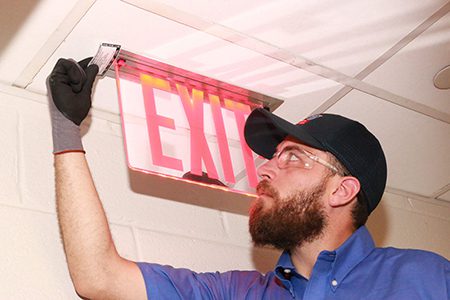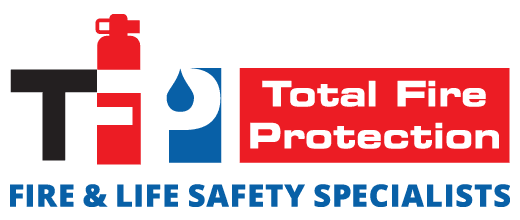 To avoid violations and possible fines, you need to keep your emergency exit signs in compliance. But, with so many federal, state, and local requirements, how do you keep track?
To avoid violations and possible fines, you need to keep your emergency exit signs in compliance. But, with so many federal, state, and local requirements, how do you keep track?
Keep reading to learn some of the most critical emergency exit light code requirements from OSHA and the NFPA and how to keep up with your local compliance requirements.
The Requirements for Compliance
OSHA, the NFPA, and your local municipalities each have unique and stringent requirements your emergency exit lights must meet to be up to code.
The federal guidelines from OSHA include:
Signs Must Say Exit
Every exit sign in your building must have “exit” clearly written to meet code. In addition, the letters are required to be at least 6 inches high, with the main strokes at least three-fourths of an inch wide.
Signs Must Be Visible
Each sign in your facility can not be obstructed by other objects. They must be clearly visible to all of your building’s occupants.
Signs Can’t Be too High
In addition to OSHA regulations, your building must also meet NFPA requirements. One of which stipulates that the bottoms of your signs can not be more than 6 feet 8 inches above the top of the door.
Check Local Codes
Local municipalities typically adopt the NFPA’s suggestions when it comes to emergency exit light requirements. However, they often add their own rules in addition to those mandated by the NFPA. Check with your local municipalities to determine if there are additional rules you need to follow.
Confirm the Color of Your Signs
Contrary to popular belief, exit lights do not always have to light up red. They can also be green or orange. Certain states and municipalities specify what color your signs must be, and this requirement can change when they decide another color is more effective. Review your state and local websites periodically to find out if the color requirement changed.
Perform Sign Testing & Maintenance
To be effective and safely guide your building’s occupants to safety in the event of an emergency, your emergency exit lights need to be in working order at all times. The only way to ensure your signs are working properly 24/7 is to perform the necessary tests and maintenance, which is why the NPFA requires these checks. According to the NFPA, at minimum, your exit signs must be tested once every month by depressing the test button for 30 seconds. If the sign is working, it will stay on for the 30 seconds. If it doesn’t, you need to contact an exit light provider like TFP to have it serviced. During this test, you should also check your signs for any cracks in the casing and wipe them down to clear off any dust or debris.
The NFPA also mandates your emergency lights be tested for 90 minutes at least once a year. If your sign’s battery meets NFPA standards, the light should stay on without power from your building for the entirety of the test.
In addition to the above checks, you will want to have an emergency exit light expert check the soundness of the battery, make sure the light fixtures are all tightly secured, and ensure that the lights meet OSHA and NFPA standards once a year. And if your lights are due for a replacement or an upgrade, they can help you select and install the correct light to meet all codes and save lives.
Ready to have the emergency exit lights at your building tested and serviced? Speak to one of our emergency exit light experts today.





